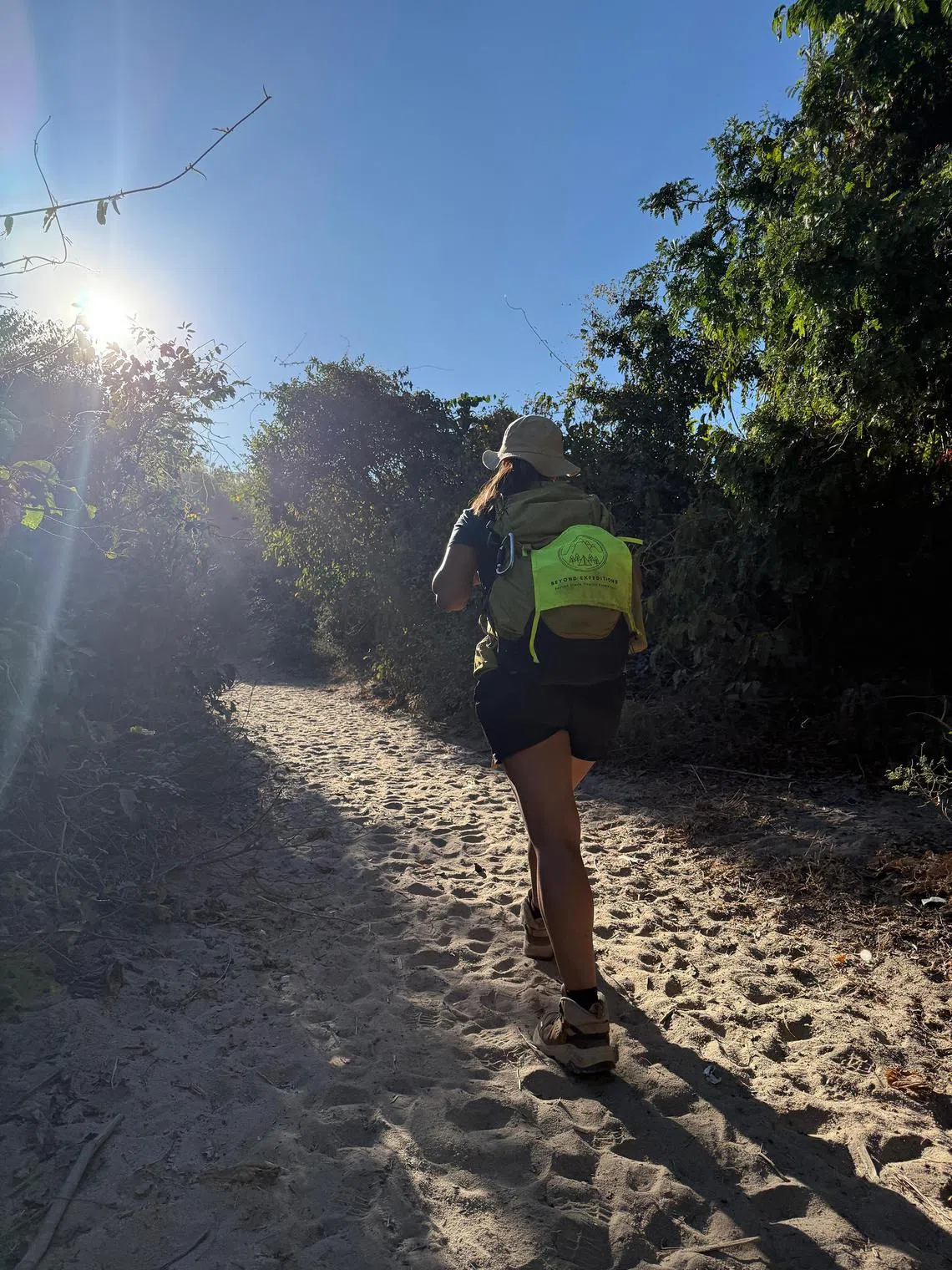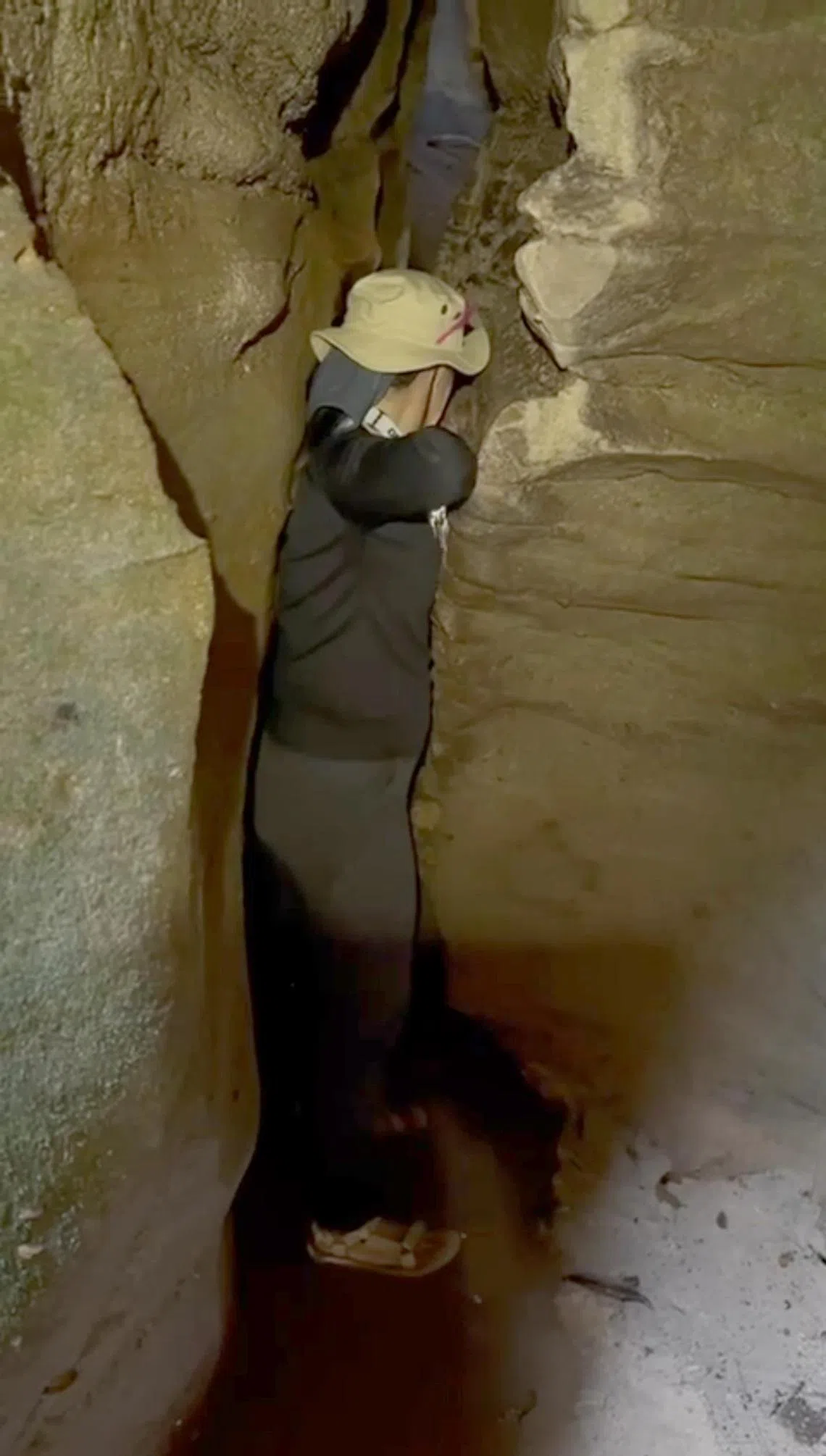S’pore travel agency Beyond Expeditions criticised for planning, safety issues
Sign up now: Get ST's newsletters delivered to your inbox

Some participants have left online reviews of a charity expedition to Madagascar in June organised by local travel agency Beyond Expeditions, citing poor planning and safety lapses.
PHOTO: COURTESY OF CHERYL TAY
Follow topic:
- Beyond Expeditions faces criticism after a Madagascar trip where participants cited safety concerns, including unexpected caving and numerous river crossings.
- Participants reported inadequate pre-trip communication, leading to panic in a cave and injuries during river crossings due to "improper footwear".
- Beyond Expeditions acknowledged the feedback, announcing enhanced safety measures like better briefings and direct feedback channels for future trips.
AI generated
SINGAPORE – Local travel agency Beyond Expeditions has drawn negative reviews for its handling of an 11-day charity expedition in Madagascar, with some participants criticising the “safety gaps” and “limited communication” online.
The trip to the island nation off the south-eastern coast of Africa took place from June 2 to 12. It involved 15 Singapore participants and was led by Beyond Expeditions founders Scott Tay and Kavita Kaur, as well as personal trainer Nicholas Leong, who has been an expedition leader with the company on various occasions since 2017.
Each participant paid $6,990 for the tour, which included accommodation, meals, ground transport, local guides and national park fees, and excluded airfare.
Since returning from the trip, some participants who felt like their safety had been compromised have voiced their dissatisfaction.
On June 24, Ms Cheryl Tay, 38, owner of a sports marketing agency, posted a one-star review of the trip on Beyond Expeditions’ Google Maps profile relating what she calls “safety gaps during treks, and limited communication or clarity around what to expect”.
For example, she says pre-trip briefing materials, such as a set of slides and an expedition handbook seen by The Straits Times, did not inform the group of any caving activities.
“We were all just shuffling into the cave and came to a sudden stop because a fellow participant realised the dangers of the cave. That got us stuck and for around 10 minutes, the rest of us were waiting to move with no idea what was going on,” says Ms Tay.
She leads an active lifestyle and has completed Ironman triathlons and other overseas expeditions, such as a five-day trek in the mountainous Annapurna region of Nepal.

Ms Cheryl Tay (pictured), owner of a sports marketing agency and one of the participants, says the group was not informed of caving activities prior to the trip.
PHOTO: COURTESY OF CHERYL TAY
Another participant, local comedian Jaikishan, 32, says Mr Tay surveyed the cave after some in the group voiced their concerns about unsafe obstacles. That section of the activity was eventually canned.
Jaikishan says: “I’m not an avid expeditioner or hiker and went into the cave even though I was quite afraid. To hear from our overall expedition leader that the caves had certain risks only after we all had entered and exited was not reassuring.
“It felt like the whole situation could have been avoided and a lot of communication was lacking.”
One participant – who says he is trained in land navigation, wilderness survival skills and basic first aid from his extensive experience in the outdoors – told ST he was among the first in the group to enter the cave. Due to the nature of his job, he declined to reveal any identifying information.
“We were not told that it was going to be so claustrophobic and so technical to navigate. After just a short while in the cave, I noticed people were already panicking and struggling,” he says.
“Among the most dangerous possibilities was that someone could have been seriously injured in the cave, and because of how narrow it was, getting medical attention would have been an issue.
“Also, entering environments like these requires considerable mental preparation beforehand. If anyone had a nervous breakdown, it would have been hard to help them recover in that space,” he adds.
In a written response to ST on July 16, Mr Tay said this was not a technical caving activity, but a section of natural slot canyon terrain which is typical of the region’s landscape.
He said that although the nature of the expedition’s terrain had been communicated to participants, some might have interpreted “canyons” or “rugged terrain” differently.
“Our Madagascar ground team, who have led numerous expeditions through this area... deemed this section passable under typical dry-season conditions,” he added.
In another instance, Ms Tay says while participants were informed that there would be “at least three river crossings” via pre-trip briefing slides, the extent and duration of these crossings were not well communicated.
She says the group completed around 10 river crossings over four days, and that they did not expect one of the crossings to take around four hours.
Ms Tay adds that she and other participants sustained blisters and cuts on their feet from prolonged water exposure in “improper footwear” as they were instructed to change into sandals prior to the crossings.
However, Mr Tay described that particular lengthy crossing as a “dynamic segment where trails criss-crossed shallow river beds, alternating between dry land and water”.
He added that participants were advised to rotate between appropriate footwear options based on the terrain, conditions, expected duration and personal preference.
“This included the use of sandals for river sections, particularly for those who preferred not to soak their primary hiking shoes.”

Ms Tay (pictured) says they encountered cave passages that were cramped and narrow. After some in the group voiced their concerns about unsafe obstacles, the activity was eventually canned.
PHOTO: COURTESY OF CHERYL TAY
Jaikishan was brought on the trip by the organisers as an ambassador, and the cost of his trip was fully sponsored, including airfare.
As an ambassador, he led marketing initiatives such as arranging slots on local radio stations 987 and Kiss92, where he, Mr Tay and Ms Kaur spoke about the trek’s mission to raise funds for a Madagascan charity working with underprivileged children.
Ms Tay received around a 20 per cent discount off the tour price for providing “pre-trip marketing services”, and paid for her own airfare, which cost around $2,400.
“We were charged a premium for this trip, so I think it is reasonable for us to have expected basic risk management and communication. Instead, it felt like we were relying excessively on the local operators, who were mostly unable to speak English,” says Ms Tay, who is also a content creator with around 81,800 followers on Instagram.
At least two other participants left one-star reviews on the company’s Google profile in early July, citing “poor decision-making”, “a lack of route planning” and dismissiveness from organisers when they gave feedback.
Since posting a reel about her experience on Instagram on July 7, Ms Tay says she has received accounts from more than 40 individuals regarding negative experiences with Beyond Expeditions. Her three-minute video has garnered over 254,000 views.
However, not all participants had brickbats for the company, which has 52 five-star reviews out of the 77 on its Google profile, as at July 18.
One such review from a participant on the Madagascar tour applauds the expedition leaders and a local guide named Lanto for “being great leaders during the journey and showing immense patience towards all the queries posted by the team”.
Yoga teacher Lim Lishan, 32, who has been on five expeditions with Beyond Expeditions since 2017 – four to Mongolia and one to Ladakh, a region in northern India – also spoke positively about her experiences.
While her trips were neither charity expeditions like the Madagascar trek nor as physically taxing, she says Mr Tay – who was present on three of her trips as a “tour leader and coordinator” – had sufficiently communicated what to expect and adequately planned the itineraries with safety in mind.
“I felt like the organisers fulfilled their basic responsibilities to the travel group. For example, they always made sure that I could chat with them through WhatsApp and would check in regularly with the local guides when we were abroad,” she told ST.
Mr Tay said that some participants on the Madagascar tour may have interpreted trip descriptions differently from what was briefed, and that the company would be taking concrete steps to improve.
“We’re actively implementing improvements such as enhanced terrain briefings, refined daily pacing, and more structured feedback touchpoints throughout the expedition,” he added.
A July 16 post on Beyond Expeditions’ Instagram account also acknowledged recent feedback from participants and announced similar safety measures.
Beyond Expeditions started in 2017 and has organised over 1,000 tours, specialising in remote destinations such as Mongolia and Central Asia.
A 10-day trip to Kazakhstan, for instance, costs $7,990 a person and includes flights, meals, an English-speaking local guide and ground transport.
The Madagascar trip, which has raised $12,285 of its $80,000 target for Madagascan non-profit Mamiratra ho an’ny Ankizy Association (Shine for the Children Association) so far, was part of the company’s Beyond Limits expedition series, where participants raise funds to support a charitable organisation.
The June trip is the ninth Beyond Limits expedition since the series began in 2017, with previous editions featuring treks in destinations like Kyrgyzstan and Mongolia.


